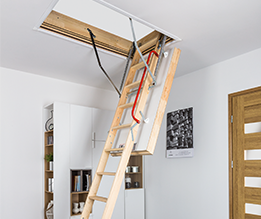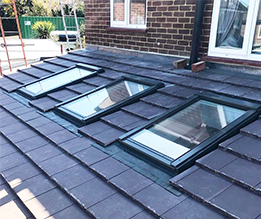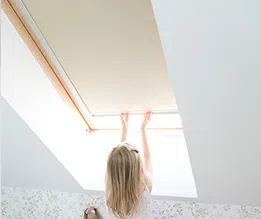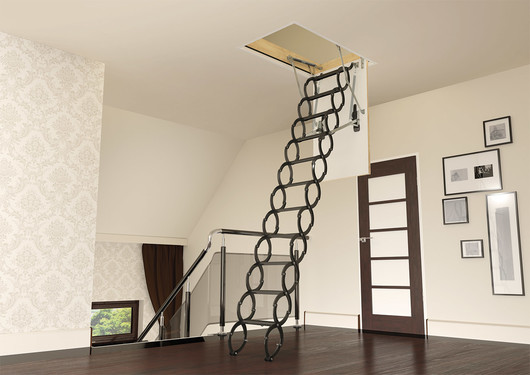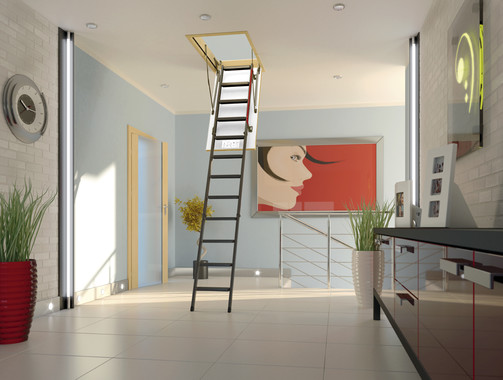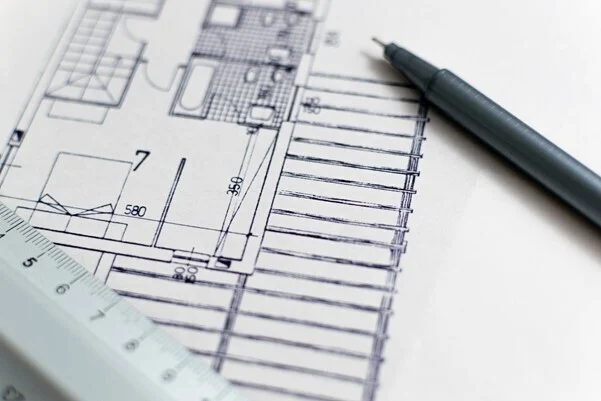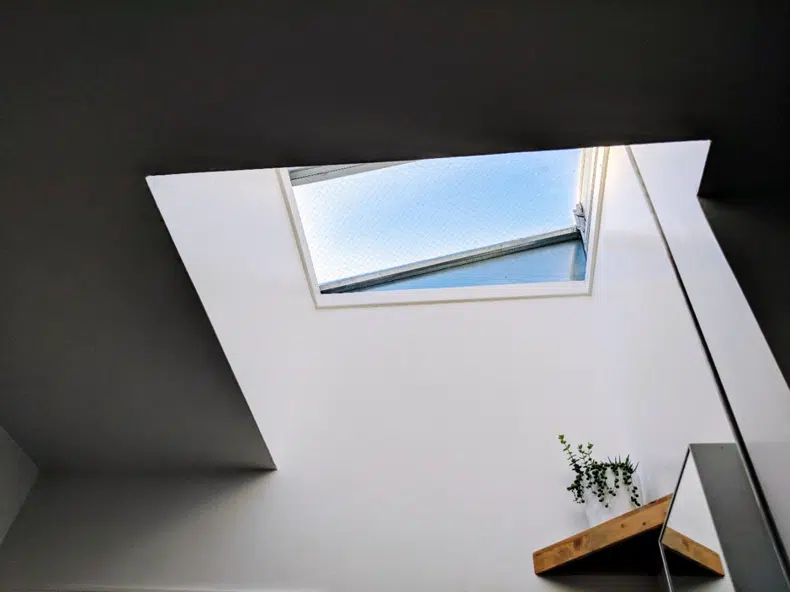The Full Loft Ladder Guide
Welcome to our comprehensive guide on loft ladder installation and usage! Whether you're looking to create additional storage space or enhance accessibility to your loft, this step-by-step guide will walk you through everything you need to know. From measuring your space to safely using the loft ladders, we’ll cover:
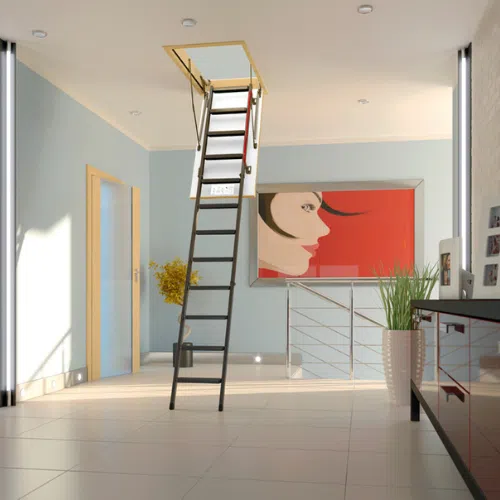
A loft ladder provides easy access to an attic or loft, allowing you to utilise it for storage. This can be particularly valuable in homes with limited space, as the additional room can be used for holding seasonal items, luggage, or rarely used belongings. You may even wish to have your loft converted for storage with a floor, interior walls, insulation, and flooring for optimum organisation and protection of your belongings, with a loft ladder for easy access.
A loft hatch and ladder provides a simple, discreet, and efficient means of accessing the attic. This is especially beneficial when compared to alternatives like step ladders, as a loft ladder is typically compact, fixed in place, and can be easily unfolded for use.
The cost of loft ladders in the UK can vary based on several factors:
- Folding loft ladders: Basic folding loft ladders can start from around £50 to £100. Mid-range options with enhanced features may range from £100 to £300. High-end models with premium materials and additional features can exceed £300.
- Sliding loft ladders: Sliding loft ladders typically fall within the same price range as folding ladders. Basic models may start at around £50, while more advanced options can go up to £300 or more.
- Scissor loft ladders: Scissor loft ladders, known for their innovative design, can be priced higher. Basic scissor ladders may start at around £100, with more advanced models ranging from £200 to £500 or more.
The material of the ladder can also influence the cost. For example, wooden loft ladders are often more expensive than aluminium or steel ladders. Additional features such as handrails, non-slip treads, and adjustable height may contribute to higher prices, and well-known brands with a reputation for quality and durability may have loft ladders at a higher price point. However, investing in a reputable brand can ensure a reliable and long-lasting product, so it’s worth spending a bit more if you can.
On top of purchasing your ladder, you’ll have to think about having it fitted. The cost of fitting a loft ladder in the UK will depend on various factors — here’s a breakdown of potential costs:
- DIY Installation: If you choose to install the loft ladder yourself, you’ll save on labour costs. However, it’s crucial to follow the manufacturer’s instructions carefully and ensure you have the necessary tools for a safe and proper installation.
- Professional Installation: Hiring a professional installer can ensure a secure and compliant installation. Professional installation costs may range from £100 to £300, depending on the complexity of the job and your location.
- Additional Costs: Additional costs may arise if modifications to the existing loft opening or framing are required. Any structural changes or adjustments to accommodate the ladder can incur extra expenses.
Considering both the cost of the loft ladder and the installation, a total budget could range from £150 for a basic DIY installation to £800 or more for a high-end scissor loft ladder with professional installation and potential modifications.
Loft ladders come in various types and materials, offering homeowners a range of options to suit their specific needs and preferences. One common type is the folding loft ladder, which is designed to neatly fold and unfold, providing easy access to the loft while conserving floor space when not in use. These ladders are often made from lightweight yet sturdy materials such as aluminium or steel, ensuring durability without adding excessive weight. The folding design makes them suitable for homes where space is at a premium, and they are often chosen for their practicality and user-friendly operation.
Another popular type is the sliding loft ladder, which operates on a sliding mechanism for smooth extension and retraction. This type is often favoured for its ease of use and stability. Sliding loft ladders can be constructed from materials like wood as well as metal, offering a balance between strength and aesthetics. Wooden loft ladders are commonly chosen for their natural appeal and the ability to seamlessly blend with the interior design of the home.
Materials used in loft ladder construction play a crucial role in determining the ladder’s weight, strength, and overall durability. Aluminium and steel ladders are prized for their lightweight nature and resistance to corrosion, making them suitable for frequent use. Wooden loft ladders, on the other hand, provide a sturdy option for bearing heavy weights as well as a classic, warm aesthetic, appealing to those who prioritise the visual integration of the ladder within their living space.
Scissor loft ladders are an innovative option for homeowners seeking efficient access to their loft spaces. Scissor loft ladders are characterised by a unique folding mechanism that operates in a scissor-like fashion. This design allows for a more compact and space-saving solution compared to traditional folding or sliding ladders.
Scissor loft ladders are often constructed using lightweight yet robust materials such as aluminium or steel. These materials contribute to the ladder’s strength and durability while ensuring ease of operation. The scissor mechanism facilitates a smooth and controlled extension and retraction, making them a practical choice for users looking for a ladder that is easy to handle.
One of the key advantages of scissor loft ladders lies in their versatility and adaptability to different ceiling heights. The scissor mechanism allows for various height adjustments, accommodating a range of loft or attic configurations. This adaptability makes scissor loft ladders suitable for homes with varying ceiling heights, offering homeowners a flexible and efficient solution for accessing their loft.
Measuring for a loft ladder is a crucial step to ensure that you choose the right size and type for your specific space. Here are detailed instructions on how to measure for a loft ladder:
- Measure the ceiling height: Begin by measuring the distance from the floor to the ceiling in the location where the loft ladder will be installed. This measurement is essential for determining the ladder’s length and ensuring it can comfortably reach the loft space.
- Measure the loft opening size: Measure the dimensions of the loft opening, including both width and length. The ladder should fit securely within this opening when retracted.
- Consider the swing clearance: Take into account the swing clearance needed for the ladder to unfold and extend properly. Measure the available space around the loft opening to ensure that the ladder can swing down without obstruction.
- Check the landing space: Measure the floor space below the loft opening to ensure there is enough room for a secure landing when descending the ladder. This is important for both safety and convenience.
- Determine the load capacity: Identify the weight capacity required for the ladder based on how you intend to use it. Consider the combined weight of the user and any items they may carry up or down the ladder. Ensure the selected ladder has an appropriate load capacity.
Before starting the installation, ensure you have all the necessary tools and materials including the loft ladder kit, screws, anchors, a power drill, a tape measure, a spirit level, a saw, a wrench, safety goggles, and a pencil. Prepare the loft opening by clearing the area around it of any obstructions, and ensure the opening is clean and free from debris. Refer to the manufacturer’s guidelines to determine the correct placement for the ladder, using a tape measure and pencil to mark the mounting points on the loft hatch.
Secure the ladder frame to the loft opening, following the marked points. Ensure the frame is level and square using a spirit level. Then attach the ladder to the frame using the provided screws and bolts, again remembering to follow the manufacturer’s instructions for the specific attachment points.
Once fitted, test the operation of the ladder by unfolding and retracting it a few times. Ensure there are no obstructions and that it locks securely in both extended and retracted positions. Confirm the stability and sturdiness of the installed ladder by applying gentle pressure. Ensure all connections are secure.
Handrails enhance safety during ladder use. If your loft ladder comes with handrails, attach them according to the manufacturer’s guidelines. Similarly, if the loft ladder kit includes non-slip treads, install them on each step to enhance safety during use. If your ladder includes a mechanism to secure it in the loft position, make sure it is engaged to prevent accidental unfolding.
Finally, conduct a thorough inspection of the entire installation, checking for any loose screws or structural issues. Confirm that the ladder is secure, level, and operates smoothly. Always refer to the specific instructions provided by the loft ladder manufacturer, as installation steps may vary. If you’re unsure or uncomfortable with any part of the installation process, it’s advisable to seek professional assistance as safety should always be a top priority when it comes to DIY.
If fitting to an existing hatch, begin by inspecting your existing loft hatch to determine its suitability for a ladder installation. Ensure that it is structurally sound and can accommodate the weight and dimensions of the ladder.
Choose a loft ladder that fits the dimensions of your existing hatch. Consider folding, sliding, or scissor-type ladders based on available space and personal preferences. Then, measure the dimensions of your existing loft opening and mark the positions for mounting the ladder. Follow the manufacturer’s guidelines for proper placement. If your existing loft hatch frame is not sturdy enough, reinforce it first by adding additional framing. Use lumber or plywood to provide extra support and stability.
Inspect the entire installation, checking for any loose screws or structural issues with the hatch. Confirm that the ladder is secure, level, and operates smoothly.
If your loft doesn’t have an existing access hole or if it is too small, you can use a saw to carefully cut an opening according to the dimensions specified in the manufacturer’s instructions. You may want to hire a professional to do this.
You may encounter an issue after fitting your loft ladder, but don’t worry — most common issues have simple solutions. For example, if you have limited room, swap your ladder for a more compact types such as a folding or scissor ladder to maximise available space. Or, choose a ladder with an adjustable height range, or consider installing a drop-down extension ladder to address variable ceiling heights.
If you feel your loft ladder doesn’t have adequate support, reinforce the existing framing as needed, ensuring it can bear the weight of the ladder and its users. If your existing hatch is in poor condition, consider replacing it or reinforcing it to ensure it can support the new ladder installation. Address uneven flooring in the loft too to ensure a stable and safe landing area when using the ladder.
If you’re looking for something to improve grip and make your loft ladder safer to use, or something that will help speed up the installation process, you may be interested in our loft ladder accessories.
When using a loft ladder, it’s crucial to prioritise safety to avoid accidents or injuries. Before ascending or descending, ensure that the ladder is securely attached to the loft entrance and that all hinges and locks are in good working condition. Maintain three points of contact at all times, either two hands and one foot or two feet and one hand, to provide stability. Take it one step at a time, avoiding haste, and never overreach, as this can compromise your balance. Always face the ladder and refrain from carrying heavy or bulky items that may affect your stability. If possible, have someone assist you by holding the ladder steady while in use. Regularly inspect and maintain your loft ladder to address any wear and tear promptly, ensuring a safe and reliable access point to your loft space.
Child safety is of utmost importance in households with loft access. If you have small children, consider installing a secure loft ladder with childproof locks or mechanisms that prevent unsupervised use. If you often leave your loft ladder open, think about adding a gate or barrier at the base of the ladder to restrict access when not in use. Regularly inspect the childproof features of the ladder and make necessary adjustments as your child grows.
Educate children about the potential dangers of climbing up or down the loft ladder without supervision and emphasise that it is not a play area. Supervision is key, so whenever the loft is in use, ensure that an adult is present to monitor and guide the child’s interaction with the ladder, promoting a safe and secure environment for the entire family.
Congratulations! You’ve successfully transformed your loft space with a functional and safe loft ladder. Whether it’s additional storage or improved access, this guide has equipped you with the knowledge needed for a successful installation.
A converted loft not only provides more space for storage, but may even increase your property value too. What’s more, you don’t always need planning permission, and they can be very cost-effective too — read our guide to find out whether a loft conversion is right for you.
By following this comprehensive guide, you’ll not only learn how to install a loft ladder but also gain valuable insights into maintaining and optimising its use. If you’d like to read more helpful tips and advice for home improvements, be sure to check out the rest of our knowledge hub.

